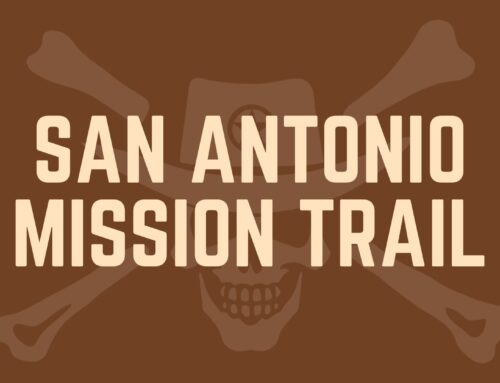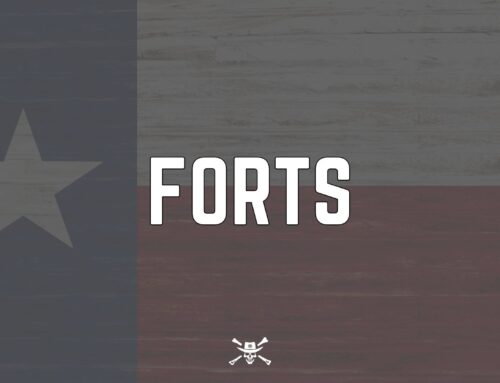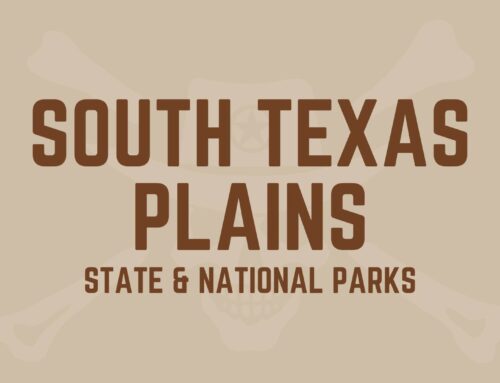Introduction
The Battle of the Alamo remains one of the most iconic and pivotal moments in American history, symbolizing the ultimate sacrifice for freedom and independence. In the early hours of a cold March day in 1836, a small group of determined defenders stood their ground against a vastly superior force, marking a defining moment in the Texas Revolution. This tale of bravery, sacrifice, and the unyielding quest for liberty continues to inspire and captivate the imagination of all who hear it.
Prelude to the Standoff
Before it became the stage for one of the most famous sieges in history, the Alamo served multiple purposes, including that of a Spanish mission and military garrison. The Texas Revolution began in October 1835, fueled by Texan settlers’ grievances against the centralist policies of Mexican President Antonio López de Santa Anna. As tensions escalated, the Alamo emerged as a critical point of defense for the Texan rebels, setting the stage for the legendary standoff.
The Path to the Alamo
The conflict was ignited by Santa Anna’s determination to quash the burgeoning rebellion against his rule, leading to his advance towards San Antonio. The defenders of the Alamo, a mix of Texan settlers, adventurers, and volunteers from the United States, chose to hold their ground, fully aware of the consequences of their decision. Their resolve was to fight for Texan independence, a cause they believed was worth the ultimate sacrifice.
Heroes of the Alamo
The defense of the Alamo was led by figures who have since become legends, each bringing their unique strengths to the fight.
William B. Travis: The Resolute Commander
- Leadership Under Siege: Travis, a 26-year-old lawyer turned soldier, took command of the Alamo, demonstrating remarkable leadership and resolve. His appeals for reinforcements, encapsulated in letters that spoke of victory or death, underscored the defenders’ dire situation and determination.
James Bowie: The Fighter’s Spirit
- Bowie’s Legacy: Despite being severely ill, Bowie’s name was synonymous with fearlessness. Known for the Bowie knife and his prowess in combat, he symbolized the rugged spirit of the frontier.
Davy Crockett: The Iconic Frontiersman
- Crockett’s Final Stand: A former congressman and renowned hunter, Crockett embodied the spirit of American independence. His decision to join the Alamo’s defenders added a significant morale boost and legendary status to their cause.
Juan Seguín: A Tejano’s Dedication
- Seguín’s Courage: Representing the local Tejano population that supported Texan independence, Seguín was a key liaison with the outside world, showcasing the diverse support for the Texan cause.
The Siege and Final Assault
Beginning on February 23, 1836, the Alamo was besieged by Santa Anna’s forces. For 13 days, the defenders repelled attacks and endured bombardment, awaiting reinforcements that would never arrive. On March 6, the Mexican army launched a pre-dawn assault, overwhelming the defenders.
The Toll of Battle
In the aftermath, all 187 Texan defenders were killed, their sacrifice becoming a rallying cry for Texan independence. Santa Anna’s forces suffered significant casualties, with estimates of 400 to 600 dead or wounded, underscoring the fierce resistance put up by the Alamo’s defenders.
The Legacy of the Alamo
The Alamo Standoff transcends its historical confines to embody the profound capacity of the human spirit for bravery and sacrifice against overwhelming odds. The saga of its 187 defenders continues to inspire those who cherish freedom, serving as a poignant reminder of the immense achievements possible when individuals stand resolutely for their beliefs. More than just a battle, the Alamo symbolizes the relentless fight for liberty and stands as a sacred testament to the cost of independence, ensuring that the heroes who defended it and their sacrifice will forever inspire future generations.
Introduction
The Battle of the Alamo remains one of the most iconic and pivotal moments in American history, symbolizing the ultimate sacrifice for freedom and independence. In the early hours of a cold March day in 1836, a small group of determined defenders stood their ground against a vastly superior force, marking a defining moment in the Texas Revolution. This tale of bravery, sacrifice, and the unyielding quest for liberty continues to inspire and captivate the imagination of all who hear it.
Prelude to the Standoff
Before it became the stage for one of the most famous sieges in history, the Alamo served multiple purposes, including that of a Spanish mission and military garrison. The Texas Revolution began in October 1835, fueled by Texan settlers’ grievances against the centralist policies of Mexican President Antonio López de Santa Anna. As tensions escalated, the Alamo emerged as a critical point of defense for the Texan rebels, setting the stage for the legendary standoff.
The Path to the Alamo
The conflict was ignited by Santa Anna’s determination to quash the burgeoning rebellion against his rule, leading to his advance towards San Antonio. The defenders of the Alamo, a mix of Texan settlers, adventurers, and volunteers from the United States, chose to hold their ground, fully aware of the consequences of their decision. Their resolve was to fight for Texan independence, a cause they believed was worth the ultimate sacrifice.
Heroes of the Alamo
The defense of the Alamo was led by figures who have since become legends, each bringing their unique strengths to the fight.
William B. Travis: The Resolute Commander
- Leadership Under Siege: Travis, a 26-year-old lawyer turned soldier, took command of the Alamo, demonstrating remarkable leadership and resolve. His appeals for reinforcements, encapsulated in letters that spoke of victory or death, underscored the defenders’ dire situation and determination.
James Bowie: The Fighter’s Spirit
- Bowie’s Legacy: Despite being severely ill, Bowie’s name was synonymous with fearlessness. Known for the Bowie knife and his prowess in combat, he symbolized the rugged spirit of the frontier.
Davy Crockett: The Iconic Frontiersman
- Crockett’s Final Stand: A former congressman and renowned hunter, Crockett embodied the spirit of American independence. His decision to join the Alamo’s defenders added a significant morale boost and legendary status to their cause.
Juan Seguín: A Tejano’s Dedication
- Seguín’s Courage: Representing the local Tejano population that supported Texan independence, Seguín was a key liaison with the outside world, showcasing the diverse support for the Texan cause.
The Siege and Final Assault
Beginning on February 23, 1836, the Alamo was besieged by Santa Anna’s forces. For 13 days, the defenders repelled attacks and endured bombardment, awaiting reinforcements that would never arrive. On March 6, the Mexican army launched a pre-dawn assault, overwhelming the defenders.
The Toll of Battle
In the aftermath, all 187 Texan defenders were killed, their sacrifice becoming a rallying cry for Texan independence. Santa Anna’s forces suffered significant casualties, with estimates of 400 to 600 dead or wounded, underscoring the fierce resistance put up by the Alamo’s defenders.
The Legacy of the Alamo
The Alamo Standoff transcends its historical confines to embody the profound capacity of the human spirit for bravery and sacrifice against overwhelming odds. The saga of its 187 defenders continues to inspire those who cherish freedom, serving as a poignant reminder of the immense achievements possible when individuals stand resolutely for their beliefs. More than just a battle, the Alamo symbolizes the relentless fight for liberty and stands as a sacred testament to the cost of independence, ensuring that the heroes who defended it and their sacrifice will forever inspire future generations.





